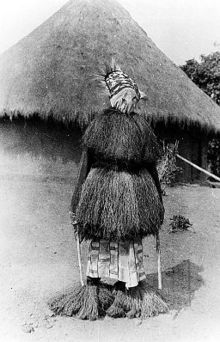
The culture of Liberia reflects this nation's diverse ethnicities and long history. Liberia is located in West Africa on the Atlantic Coast.

The Mende are one of the two largest ethnic groups in Sierra Leone; their neighbours, the Temne people, constitute the largest ethnic group at 35.5% of the total population, which is slightly larger than the Mende at 31.2%. The Mende are predominantly found in the Southern Province and the Eastern Province. The Mende are mostly farmers and hunters. Some of the major cities with significant Mende populations include Bo, Kenema, Kailahun, and Moyamba.

The Bassa people are a West African ethnic group primarily native to Liberia. The Bassa people are a subgroup of the larger Kru people of Liberia and Ivory Coast. They form a majority or a significant minority in Liberia's Grand Bassa, Rivercess, Margibi and Montserrado counties. In Liberia's capital of Monrovia, they are the largest ethnic group. With an overall population of about 1.05 million, they are the second largest ethnic group in Liberia (18%), after the Kpelle people (26%). Small Bassa communities are also found in Sierra Leone and Ivory Coast.
The Leopard Society, leopard men, or Anyoto was a secret society that operated in West Africa approximately between 1890 and 1935. It was believed that members of the society could transform into leopards through the use of witchcraft. The earliest reference to the society in western literature can be found in George Banbury's "Sierra Leone: or the white man's grave" (1888). In western culture, depictions of the society have been widely used to portray Africans as barbaric and uncivilized.

The Vai are Mandé peoples that live mostly in Liberia, with a small minority living in south-eastern Sierra Leone. The Vai are known for their indigenous writing system known as the Vai syllabary, developed in the 1820s by Momolu Duwalu Bukele and other Vai elders. Over the course of the 19th century, literacy in the writing system became widespread. Its use declined over the 20th century, but modern computer technology may enable a revival.
The Gola or Gula are a West African ethnic group who share a common cultural heritage, language and history and who live primarily in western/northwestern Liberia and Eastern Sierra Leone. The Gola language is an isolate within the Niger–Congo language family. As of 2015, it is spoken by about 278,000 people.
In the initiation ceremonies of the Poro of Sierra Leone, a Senufo bird is a hat worn by men or carried in a procession. Between uses it is kept the Poro’s secret tree grove. The base is hollowed out underneath so that it may fit like a cap on the head of the wearer. However, many of the birds stand on cylindrical bases that seem to be designed to rest upon the ground.

Sande, also known as zadεgi, bundu, bundo and bondo, is a women's initiation society in Liberia, Sierra Leone, Guinea and the Ivory Coast. The Sande society initiates girls into adulthood by rituals including female genital mutilation. It is said by its supporters to confer fertility, to instill notions of morality and proper sexual comportment, and to maintain an interest in the well-being of its members throughout their lives.
Momolu Duwalu Bukele was the inventor of the Vai syllabary used for writing the Vai language of Liberia—one of several African languages to develop its own writing system.

The Loma people, sometimes called Loghoma, Looma, Lorma or Toma, are a West African ethnic group living primarily in mountainous, sparsely populated regions near the border between Guinea and Liberia. Their population was estimated at 330,000 in the two countries in 2010. They are closely related to the Mende people.
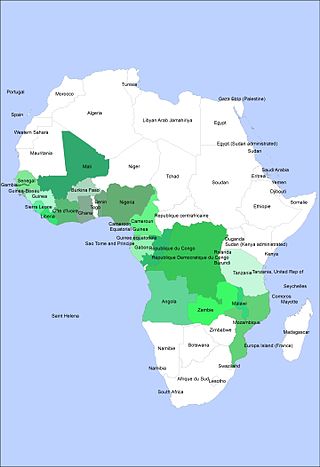
Traditional African masks are worn in ceremonies and rituals across West, Central, and Southern Africa. They are used in events such as harvest celebrations, funerals, rites of passage, weddings, and coronations. Some societies also use masks to resolve disputes and conflicts.
Christianity is the predominant religion in Liberia, with Protestantism being its largest denomination. Liberia is a secular state and its constitution guarantees freedom of religion. While most Liberians have religious affiliations, traditional belief systems are widespread.
Kwi is a Liberian term used to connote Westernization, adherence to Christianity, a Westernized first name and surname, literacy through a Western-style education, and adherence to a cash economy instead of a subsistence economy, regardless of an individual's ethnic origin. However, it has historically denoted strong adherence to Americo-Liberian cultural norms, although one need not identify as ethnically Americo-Liberian in order to be kwi.
Religion in Guinea is approximately 89% Muslim, 7% Christian, with 2% adhering to indigenous religious beliefs in 2022. There are also smaller numbers of Atheists and practitioners of other religions in the country. Much of the population, both Muslim and Christian, also incorporate indigenous African beliefs into their outlook.
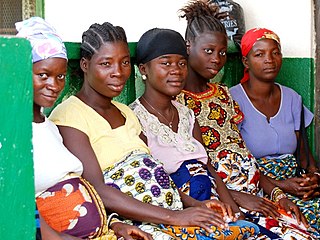
The extent of gender inequalities varies throughout Liberia in regard to status, region, rural/urban areas, and traditional cultures. In general, women in Liberia have less access to education, health care, property, and justice when compared to men. Liberia suffered two devastating civil wars from 1989–1996 and 1999–2003. The wars left Liberia nearly destroyed with minimal infrastructure and thousands dead. Liberia has a Human Development Report ranking of 174 out of 187 and a Gender Inequality Index rank of 154 out of 159.
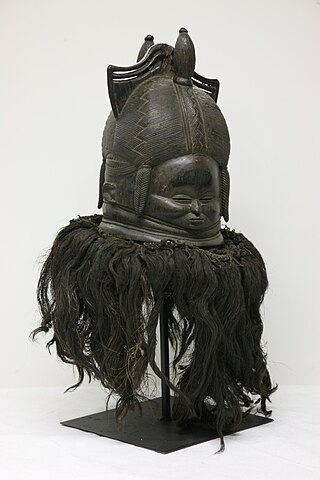
Art in Sierra Leone has a long and significant tradition of carving and ceremonial works like masks and cloth for initiation and protection. Although art styles are oftentimes ascribed to a single ethnic group, the styles and processes are spread throughout the country and many artists move between the different ethnic groups in the country.

Public masquerades play an extremely significant role in the life of the Mende people - one of the two largest ethnic groups in Sierra Leone.

The Sierra Leone Creole people are an ethnic group of Sierra Leone. The Sierra Leone Creole people are descendants of freed African-American, Afro-Caribbean, and Liberated African slaves who settled in the Western Area of Sierra Leone between 1787 and about 1885. The colony was established by the British, supported by abolitionists, under the Sierra Leone Company as a place for freedmen. The settlers called their new settlement Freetown. Today, the Sierra Leone Creoles are 1.2 percent of the population of Sierra Leone.

Aso ebi (Yoruba), sometimes spelled as asoebi in Nigeria is a uniform dress or dressing code/style that is traditionally worn by the Yoruba People is an indicator of cooperation, camaraderie and solidarity during ceremonies, events and festive periods. The purpose of wearing the dress can be to serve as self-identification with age mates, relatives or friends during social occasions or funerals.
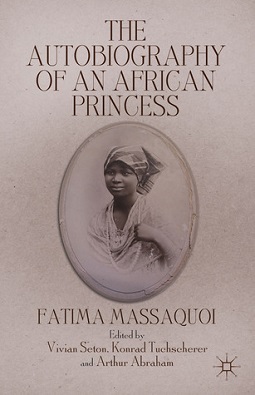
The Autobiography of an African Princess, published in 2013, is an account of the early years (1912–1946) in the life of Fatima Massaquoi, a descendant of the royal families of the Gallinas from Sierra Leone and Liberia. It describes her early childhood in Africa, her schooling in Germany and Switzerland and her university studies in the United States.



